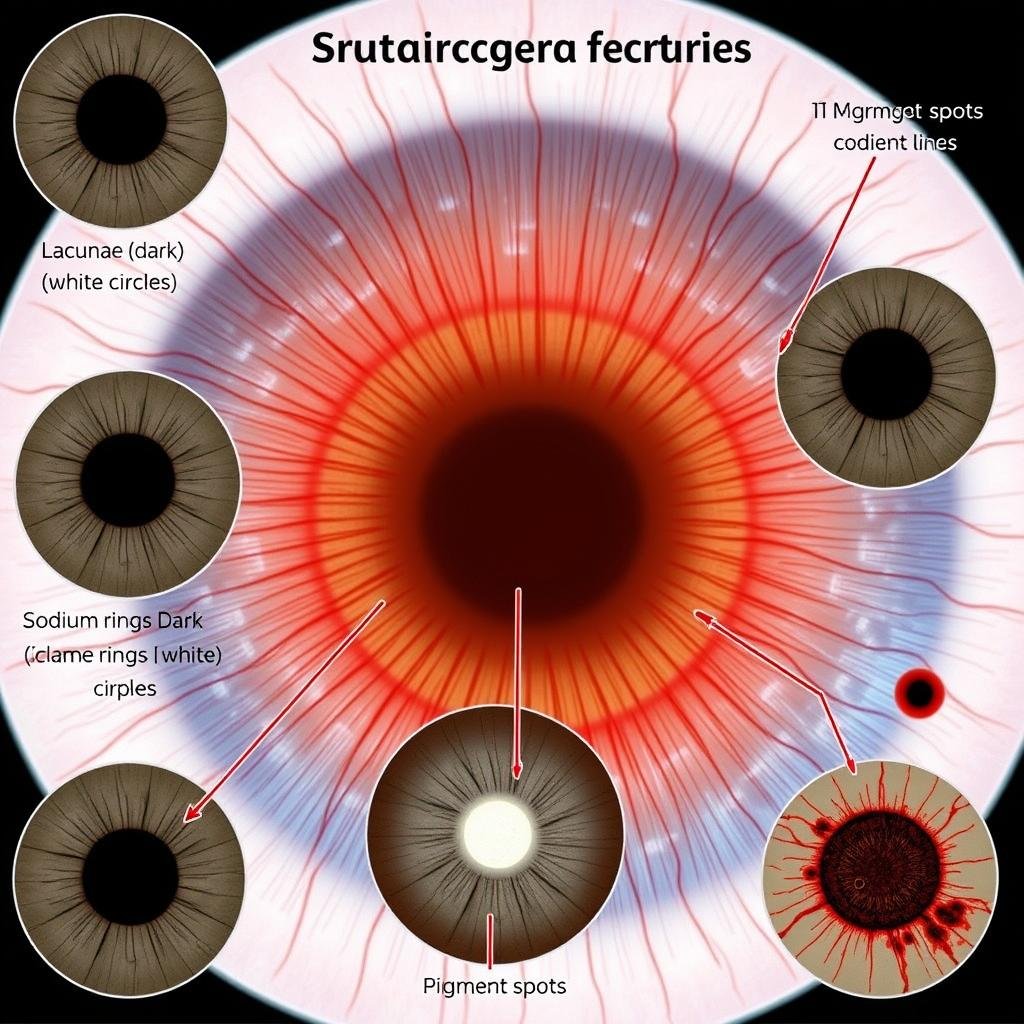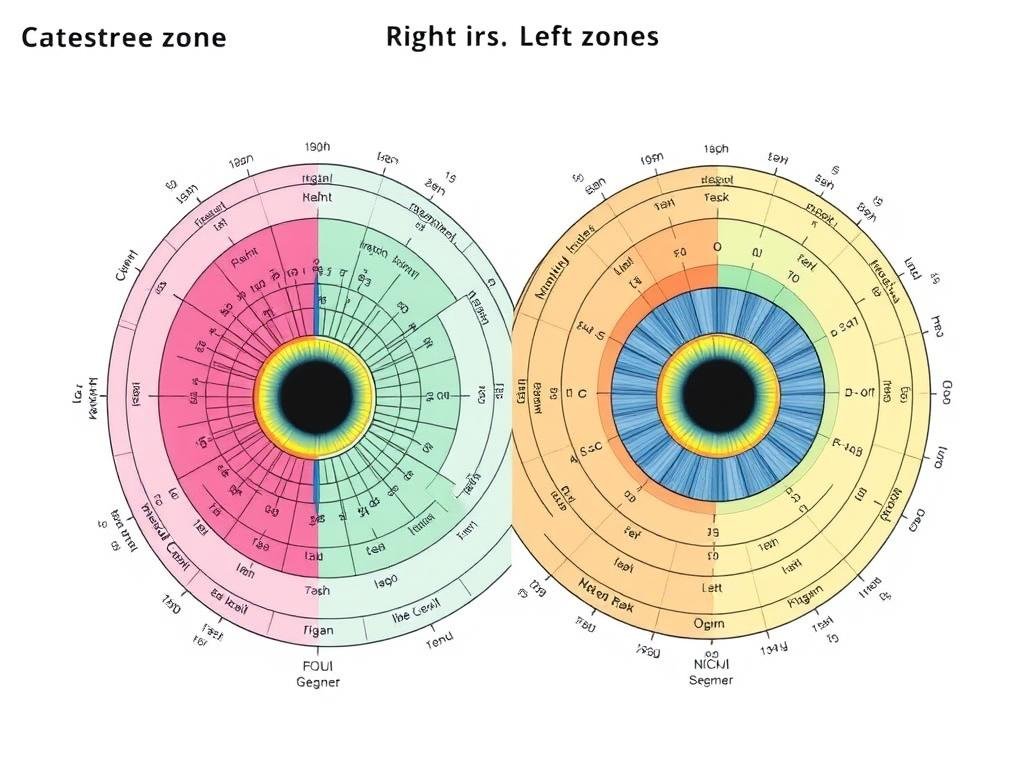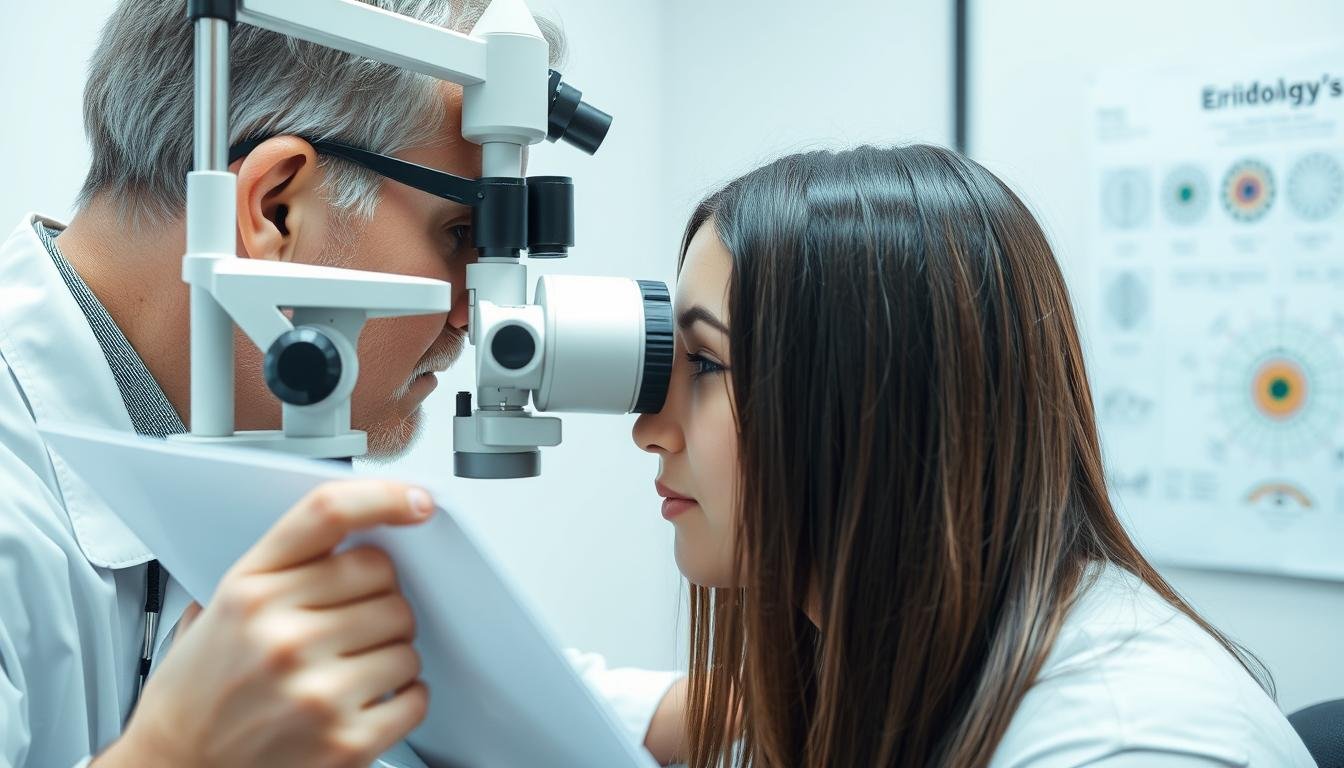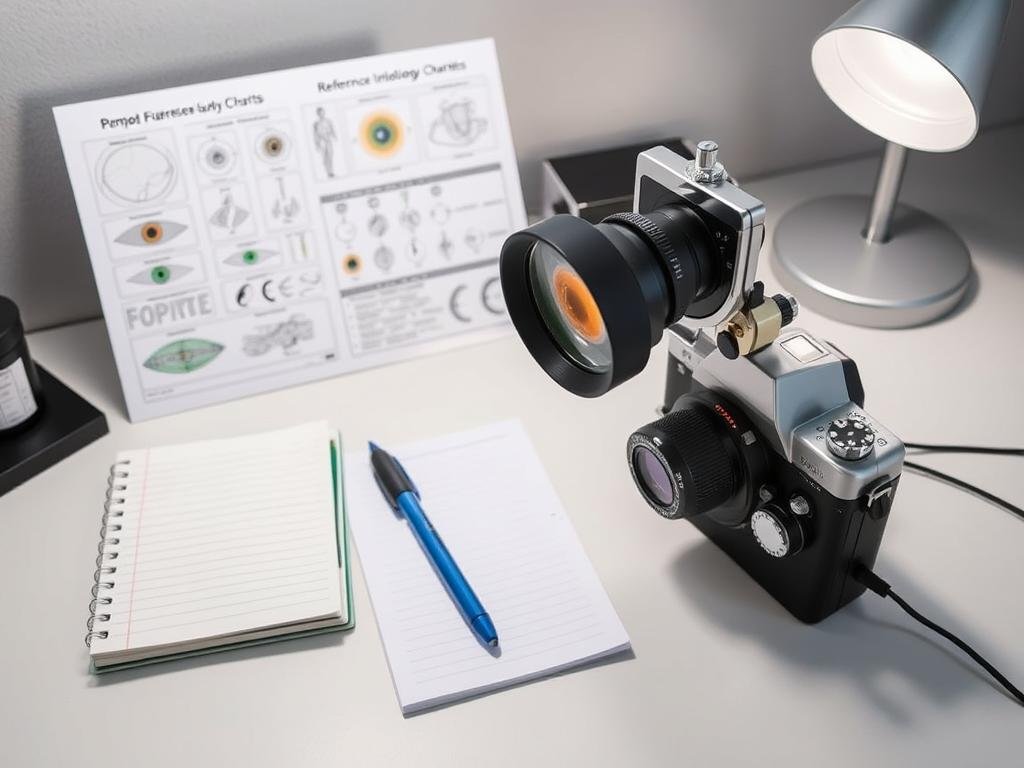Iridology is the fascinating study of the iris—the colored part of your eye—to assess potential health conditions. Practitioners believe that different zones of the iris correspond to various organs and systems in the body. An grafico iridologico serves as a detailed map that helps interpret these connections, potentially revealing insights about your overall health and wellbeing.

In this comprehensive guide, we’ll walk through the step-by-step process that practitioners use to analyze and interpret an grafico iridologico, from basic principles to advanced techniques. Whether you’re a health practitioner looking to expand your knowledge or simply curious about this alternative health practice, this tutorial will provide valuable insights into the world of iridology.
Introduzione a Grafico iridologico Analisi
Figure 1: Standard Grafico iridologico showing iris zones and their corresponding body systems
Cos'è un Grafico iridologico?
UN grafico iridologico is a specialized mapping tool that divides the iris into multiple sections, each linked to specific body parts and systems. These charts serve as reference guides for practitioners to identify potential health concerns based on markings, colors, and patterns observed in a person’s iris.
The modern grafico iridologico has evolved over centuries, with significant contributions from physicians like Ignatz von Peczely in the 1800s and Bernard Jensen in the 20th century. Today’s charts typically feature concentric circles divided into zones that correspond to different organs and body systems.
Why Grafico iridologico Interpretation Matters
While iridology remains controversial in mainstream medicine, many alternative health practitioners find value in grafico iridologico analysis as a non-invasive screening tool. Proponents suggest it can provide early indications of potential health issues, allowing for preventative measures before symptoms manifest.
Understanding how to interpret an grafico iridologico can offer insights into:
- Potential areas of inflammation or stress in the body
- Constitutional strengths and weaknesses
- Signs of toxin accumulation
- Indicators of digestive system function
- Potential nervous system imbalances
Key Insight: Iridology is considered a complementary assessment tool rather than a diagnostic method. It’s typically used alongside other health evaluations to form a more complete picture of a person’s health status.
Preparing to Read an Grafico iridologico
Before diving into chart interpretation, practitioners must gather the right tools and understand the fundamental symbols and markings they’ll encounter.
Tools Needed for Grafico iridologico Analisi
Proper iridology assessment requires specific equipment to accurately observe and document iris features:
- Magnification device – A high-quality magnifying glass (10x minimum) or specialized iridology camera
- Proper lighting – Natural or full-spectrum lighting that doesn’t alter iris coloration
- Reference charts – Standard grafici iridologici for comparison
- Documentation system – For recording observations and tracking changes over time
- Penlight – For highlighting specific iris features
Common Symbols in an Grafico iridologico
Interpretare un grafico iridologico requires familiarity with several key markings and what they potentially indicate:
| Symbol/Marking |
Aspetto |
Potenziale indicazione |
| Linee radiali |
Straight lines extending from pupil to outer iris |
Normal iris structure; excessive lines may indicate stress |
| Lacune |
Enclosed dark areas or “crypts” |
Potenziale debolezza intrinseca nell'organo corrispondente |
| Sodium ring |
White ring around outer iris |
Possible mineral imbalance or elevated cholesterol |
| Anelli nervosi |
Circular lines that appear like ripples |
Potenziale tensione nervosa o risposta allo stress |
| Macchie di pigmento |
Macchie scure o macchie |
Possible toxin accumulation in corresponding organ |

Figure 2: Common markings found on the iris and their corresponding locations on an grafico iridologico
Ready to Learn More About Iridology?
Discover how professional iridologists interpret these markings with our comprehensive iridology guide. Get insights from certified practitioners and enhance your understanding of this fascinating field.
Scarica Guida all'iridologia gratuita
Step-by-Step Guide to Interpreting an Grafico iridologico
Now that we understand the basics, let’s walk through the systematic process practitioners use to analyze an iris using an grafico iridologico.
Step 1: Mapping Iris Zones on the Grafico iridologico
The first step in interpretation is understanding how the iris is mapped on an grafico iridologico. Most charts divide the iris into concentric zones and radial segments:

Figure 3: Standard zone mapping on an grafico iridologico
- Identify the right and left iris – The right iris typically corresponds to the right side of the body, while the left iris corresponds to the left side.
- Locate the pupillary zone – The area immediately surrounding the pupil, often associated with the digestive system.
- Identify the ciliary zone – The middle zone between the pupillary border and the outer iris, often linked to circulation and metabolic functions.
- Map the outer iris zone – The peripheral area of the iris, frequently associated with skin, lymphatic system, and extremities.
- Note the clock positions – Many grafici iridologici use clock positions (1-12) to precisely locate findings.
Professional Tip: Always examine both irises separately, as differences between them can provide valuable comparative information about the body’s symmetry and potential imbalances.
Step 2: Identifying Markings and Patterns
Once you’ve mapped the zones, the next step is to identify specific markings and patterns within each area:
- Analisi del colore – Note the base color (blue, brown, mixed) and any variations or discolorations
- Structural integrity – Observe the density and arrangement of iris fibers
- Specific markings – Identify lacunae, crypts, pigment spots, and other distinct features
- Rings and arcs – Note any circular patterns like nerve rings or sodium rings
- Caratteristiche dell'alunno – Observe pupil shape, size, and border definition
Step 3: Correlating Findings with Health Indicators
The final step involves correlating your observations with potential health indicators according to iridology principles:
| Zona di iris |
Corresponding Body Systems |
Common Findings |
Potential Health Indications |
| Upper right quadrant |
Brain, sinuses, right lung |
White fibers, lacunae |
Nervous tension, respiratory sensitivity |
| Upper left quadrant |
Brain, sinuses, left lung, heart |
Nerve rings, pigmentation |
Circulatory stress, emotional tension |
| Right middle zone |
Liver, gallbladder, pancreas |
Brown spots, radial furrows |
Digestive inefficiency, metabolic stress |
| Left middle zone |
Stomach, spleen, pancreas |
Darkened areas, crypts |
Digestive weakness, nutritional absorption issues |
| Lower zones |
Kidneys, intestines, reproductive organs |
Lacunae, discoloration |
Elimination challenges, hormonal imbalances |

Figure 4: Professional iridologist correlating iris findings with an grafico iridologico
Advanced Techniques for Grafico iridologico Analisi
As practitioners gain experience, they often employ more sophisticated methods to enhance the accuracy and depth of their grafico iridologico interpretations.
Cross-Referencing Grafico iridologico Data with Patient History
Experienced iridologists don’t rely solely on iris observations but integrate this information with the client’s health history:
- Symptom correlation – Matching iris signs with reported symptoms
- Family history integration – Considering genetic predispositions alongside iris indicators
- Timeline analysis – Tracking iris changes over time to monitor health progress
- Lifestyle assessment – Evaluating how diet, stress, and environment might influence observed iris patterns
- Multi-system approach – Looking for patterns that affect multiple body systems
Case Study: Interpreting a Complex Grafico iridologico
To illustrate advanced interpretation techniques, let’s examine a hypothetical case study:
A 45-year-old client presents with chronic fatigue and digestive discomfort. The iridologist observes several key features: a sodium ring in both irises, nerve rings in the left iris, and brown pigmentation in the liver/gallbladder zone of the right iris. Cross-referencing with the client’s history reveals recent stress, poor dietary habits, and a family history of gallbladder issues.
– Case study from Advanced Iridology Practice
The practitioner’s analysis might include:
Observed Iris Signs
- Sodium ring (potential mineral imbalance)
- Nerve rings (indication of stress response)
- Liver/gallbladder zone pigmentation (potential toxin accumulation)
- Radial furrows in digestive zone (possible digestive weakness)
Correlated Health Factors
- Chronic stress affecting nervous system
- Poor dietary habits impacting mineral balance
- Potential inherited gallbladder weakness
- Digestive inefficiency contributing to fatigue

Figure 5: Case study iris analysis using an grafico iridologico
Approfondisci la tua conoscenza dell'iridologia
Want to learn advanced iridology techniques from certified practitioners? Our professional workshops provide hands-on training with expert guidance.
Pianificare una consulenza
Common Mistakes in Grafico iridologico Interpretazione
Even experienced practitioners can make errors when interpreting an grafico iridologico. Being aware of these common pitfalls can help improve accuracy:

Figure 6: Common errors in grafico iridologico interpretation
- Overinterpretation – Attributing too much significance to minor iris features or normal variations
- Diagnostic claims – Making specific disease diagnoses rather than identifying potential areas of weakness
- Ignoring individual context – Failing to consider a person’s unique health history, genetics, and lifestyle
- Inadequate training – Attempting interpretation without sufficient knowledge of iris anatomy and iridology principles
- Poor documentation – Not properly recording observations for future comparison
Importante: Iridology should be used as a complementary assessment tool, not as a replacement for proper medical diagnosis. Always refer clients to appropriate healthcare providers for any concerning findings.

Figure 7: Proper documentation of grafico iridologico findings
FAQ Grafico iridologico Analisi
How accurate is grafico iridologico analysis?
The accuracy of iridology remains debated in scientific communities. While many alternative health practitioners report valuable insights from iris analysis, conventional medicine does not recognize iridology as a diagnostic tool due to limited scientific evidence. It’s best viewed as a complementary assessment method rather than a definitive diagnostic technique.
Can iridology detect specific diseases?
Iridology is not designed to diagnose specific diseases. Instead, it identifies potential areas of weakness or stress in the body. Responsible practitioners use grafici iridologici to assess constitutional tendencies and areas that may benefit from support, rather than making disease-specific claims.
Quanto tempo ci vuole per imparare grafico iridologico interpretation?
Developing proficiency in iridology typically requires several months to years of study and practice. Most practitioners start with basic courses (40-100 hours) and continue with advanced training and mentorship. Mastering the nuances of grafico iridologico interpretation is an ongoing process that improves with experience.
I modelli di Iris cambiano nel tempo?
While the basic structure and color of the iris remain relatively stable throughout life, certain features can change. Acute conditions may cause temporary changes, while chronic issues might create more permanent markings. This is why practitioners often take baseline photographs and track changes over time.
Are all grafici iridologici the same?
No, there are several different grafico iridologico systems developed by various practitioners throughout history. The most commonly used charts include the Jensen chart, the European/German chart, and the Rayid model. While they share many similarities, they may differ in specific zone allocations and interpretation approaches.

Figure 8: Comparison of different grafico iridologico systems
Conclusione: il valore di Grafico iridologico Analisi
Interpretare un grafico iridologico is both an art and a science that requires patience, practice, and a holistic perspective. While iridology remains controversial in conventional medicine, many practitioners and clients find value in its non-invasive approach to health assessment.
The most effective use of grafico iridologico analysis comes when it’s integrated as part of a comprehensive health approach—one that considers the whole person, their lifestyle, medical history, and current health goals. By understanding the basics of iris interpretation and avoiding common pitfalls, practitioners can use this ancient technique as one of many tools to support their clients’ health journeys.
Whether you’re a health professional looking to add iridology to your practice or simply curious about what your eyes might reveal, remember that the true value lies in the insights gained and the positive health changes that may result from this fascinating form of assessment.
Ready to Experience Iridology Firsthand?
Discover what your iris reveals about your health with a professional iridology consultation. Our certified practitioners use advanced techniques to provide personalized insights and recommendations.
Book Your Iridology Session Today

Experience the benefits of professional grafico iridologico analysis with a certified practitioner
























